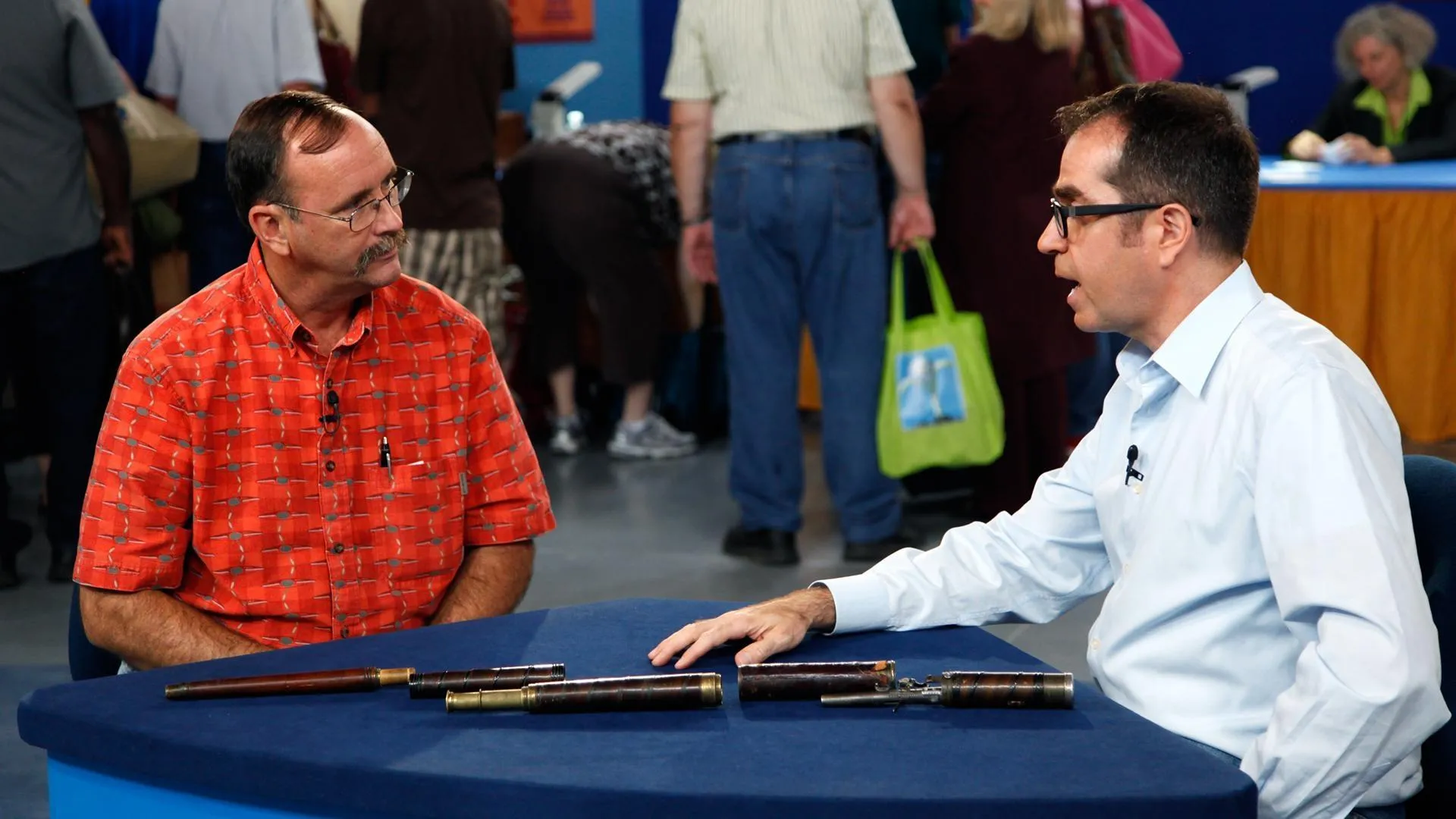GUEST: Well, I don't know a lot about them, but I bought them about 25 years ago at a estate tag sale, and the lady told me they were Sequoyah Orphan's Trading Center. That's where they were made in 1938 to 1943. The children made them, I guess to train them, and each child signed the one that they fixed. That's about all I know about them.
APPRAISER: Do you recall what you paid for them when you bought them?
GUEST: Well, I think they were about $65 and $75 a piece and I think we got all three for about $150.
APPRAISER: Let's take a look at this kneeling figure here and let's look at the bottom, and it's exactly what you said. They're signed... this particular one is signed "Clodka," would have been the student that did it, signed 1940, in Sequoyah, which is the Sequoyah school. Cherokee Indians, about an hour and twenty minutes east of here, in Tahlequah, Oklahoma, correct?
GUEST: Yes, uh-huh.
APPRAISER: I'm going to go on to the next piece, similar scenario here. We see again on the bottom, this one says, "Olivia," or "Oliviere," it's hard to quite make out, there's "Sequoyah, 1940 No. 8" and signed. We also see a "$2" on it. Would not surprise us if that was the price they charged originally.
GUEST: Oh.
APPRAISER: Okay, I'm going to go on to this third piece, this one is signed "Ada," this one's "1939, Sequoyah, No. 41." Now the forms are somewhat interesting. This is very utilitarian, it was obviously made for what it was, to be a vase. This piece has prehistoric elements to it, a lot of the trade coming...
GUEST: I like that one.
APPRAISER: I think this is a fabulous piece, personally.
GUEST: That's my favorite.
APPRAISER: And this seated figure, just fascinating when you see the figural elements, and typically in pottery we'll see an increased value in figural elements. So, there's been much discussion. Other appraisers and I have talked on set about what these are, and they've been turning up at auction around the country anywhere over the last ten years for $5, $10, $50, and for the most part it's been undiscovered. It's a relatively new market, and we're seeing things pick up. Now, by 1990, you paid $65 and $75 a piece, and maybe you got a deal on them, but you way overpaid at that point in time, okay? But things don't always stay that way. If these were listed at auction today, now what would happen is we would expect to see a lower estimate and then let the market really carry them. But I'll start with the one closest to me here, and my guess is it would probably sell between $300 and $500. Now the middle one is a little larger, but a little bit more simplistic.
GUEST: Yeah.
APPRAISER: So we would say that that's about $300 to $500 as well. It's nice and large, but it doesn't have the elements and the interest that the folded rim piece has. The seated figure on the far side, we think, realistically it would be between a $600 and $800 piece.
GUEST: Oh.
APPRAISER: So, your $150 is certainly a good buy for what they'd see today. And it's a market that, my guess is, will continue to get strong and continue to grow, because you just don't see much of this. It was produced for five years; there's not going to be a lot of it out there. So thank you for bringing them in.
GUEST: Well, thank you.



